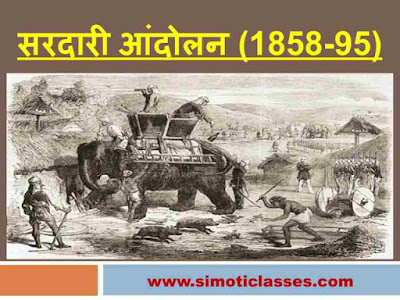Parha Panchayat Governance System
The Oraon tribe is important and populous in Jharkhand. Their social and political system is very strong. When Oraon settled in the Chotanagpur region, every family or clan chose a suitable part of the forest and cleared the forests, and made their cultivable land. They have made huts/ cottage on it, this way the villages were settled. The first forest cleaners were called 'Bhuinhar' to build the farm. Later, Oraon Jeths are called Raiyat.
Clan History:
- Among the Oraon tribe the word 'Bhuinhar'= lord of the land, their land was called 'Bhuinhar Bhoomi'. The Bhuinhars are the descendants of the pioneer families who cleared the forest and brought the particular areas under cultivation to become owners. Some called the villages inhabited by them as far as 'Bhuinhar' village.
- The Bhuinhar khunt (maximal lineage) comprise the segments: Pahan Khunt & Mahato Khunt. The person who was appointed as the agent for the management and operation of the village for performing religious functions, called 'Pahan' and the family belongs to called 'Pahan Khunt'. Pahan continued to do both administrative and religious work and in the exercise of his secular duties, a second chief was selected to assist him, called 'Mahto'.
- Authority in the Bhuinhari lineage comprises of these two offices the Pahan or Baigas (the village priest) and the Mahto (secular head) are derived from their spiritual status and from their seniority in the hierarchy of lineage elders. Great prestige and respect is attached to the status of the Pahan and Mahto and to avoid disputes these officers are selected triennially or in a few instances at a longer interval by the magic sup (winnowing basket). It is believed that the selection of these officers rests in supernatural hands so that the headship is selected through a ritual process and is believed to have a spiritual backing. A bachelor can not be a Pahan. Dasara (Mahto) runs the village.
- They have no taxation, levy, or any financial rights. All authority is embedded in Panchayats and Panchs, whose approval and consent can only do something about it.
Functions of;
- Pahan: primarily religious. It is believed that he has a sacred association with the earth and the ancestors which gives him ritual power.
- Mahto: secular head of the village and area of work became the administrative management. Usually, the most influential person among the lineage heads is elected as Mahto. The Mahto leadership is an ancestral heritage and hence a person elected must belong to the Mahto Khunt. He is responsible for the protection of the village community from external threats and hence his duty is to maintain a satisfactory relationship with the outside world. He is the chief organizer of all important public work in the village. He must be informed of all the important affairs that concern the whole lineage and the village community in general.
Gram Panchyat:
- The Panchayat was formed to resolve a dispute with the growing population in the village, in which all senior members were Panch and Mahto was its President.
- The need to work together for protection from natural and extraterritorial enemies in the surrounding villages was realized, as a result of which the 'Parha' organization stood on the lines of hunting, whose base, rather than the group of relatives, became a local nexus. The Parha, as it exists today, is a united community of several nearby neighboring villages, whose central organization is 'Parha Panch'.
- The Parha is formed by combining 7, 12, 21, or 22 villages. The head of which is called 'Raja'. Now the due to the partial disintegration of this system, the number of villages in Parha has been reduced to 5, 4, or 3.
- One of the villages in Parha is called 'Raja village', Dasre village as 'Diwan village' and the third one Panere village called 'Chauth village'. Kotwar village and the remaining villages 'Parha village'. Every village has its own special function.
- The Gram Panchayat resolves the internal disputes within the village. This includes cases of property division, marriage disputes, sexual offense, prohibition violations, sometimes assault and theft.
- In case of any disputes, the senior members of the village (panch) gather at Akhara or another designated place. Godait calls the complainant and the plaintiff on both sides. Witnesses are heard from both. There is also the practice of swearing and rigorous scrutiny. Panches are decided by consensus. The penalty is given if the crime is proved.
- Disputes of one village with another village are settled in the Parha. The final decision of boycott of caste takes place and also allows for re-entry.
Functions of Parha;
- Works for various societal welfares like human-inhumane, protection from natural and supernatural threats, disasters, organizing cultural functions, such as potted dance, mass poaching, etc.
In a special situation, a village leaves one parha and joins another, but there is no break with the old Parha. It is called 'Doodh-Bhaiya' village. The inclusion of such Doodh-Bhaiya villages leads to a larger organization or union than Parha, which is called 'Antarparha'.
Now, Oraon has become a government panchayat in villages. Political consciousness has developed in them.
👉Previous Page: Munda Manki Governance System & Wilkinson Rule - JPSC/ JSSC
👉Next Page:Doklo Sohor (Khadia) Governance System - JPSC/ JSSC




























